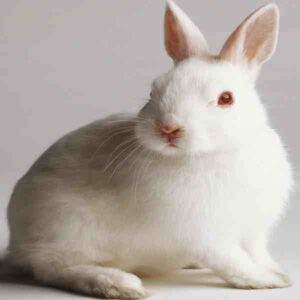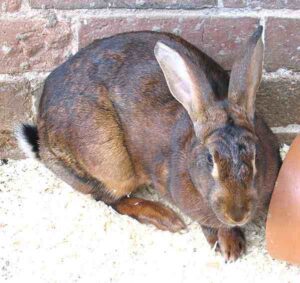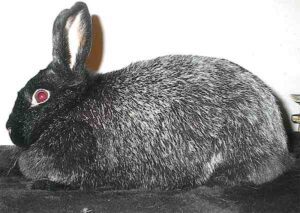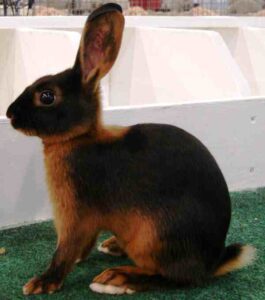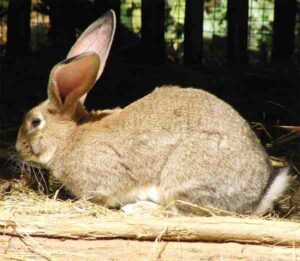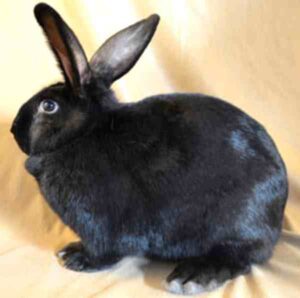The French Lop rabbit is a pretty old breed of domestic rabbit developed during the mid 19th century. As the name suggests, the French Lop rabbit was first developed in France around the 1850s.
The breed was very popular and established in France as a meat rabbit breed during the mid 19th century. The French Lop rabbit was created through selective breeding between the English Lop and the Flemish Giant rabbit.
The French Lop differs from the English Lop rabbit in that it is characterized by a heavier stature and shorter ears. French Lop is also believed to have been produced by crossing the English Lop and the Butterfly Rabbit of France. The later one is still bred in France and can be seen at the Grand Prix Show in Paris.
The French Lops were created not as a pet or show rabbit breed. But it was developed as a meat animal. As a good meat animal, the French Lop rabbit increased in popularity in neighboring countries such as Germany, Netherlands and Belgium.
The breed was introduced into the United Kingdom in 1933 primarily as a meat rabbit breed. But in 1965 it was exhibited for the first time and the breed remains a very popular exhibition and pet rabbit.
Although the French Lop rabbit was very popular throughout Europe, but it was not introduced into the United States until the early 1970s. The breed is recognized by both the American Rabbit Breeders Association and the British Rabbit Council. Today it is a popular meat rabbit breed and also raised as pets and show animal.
French Lop Rabbit Characteristics
The French Lop rabbit is a very large breed. It closely resembles the Flemish Giant rabbit breed of today. But it is shorter in body length and weights slightly more. They have lop ears of between 5 and 8 inches long that hang down below the jaw, and an almost cubic appearance with a short thickset body and large head.
The front legs of the French Lop rabbit are short and straight. And the hind legs are carried parallel to the body. The breed may be self-colored (solid-colored) or have white patches on the head, chest and legs (broken pattern).
The breed has a dense, soft coat with medium length hair that comes in two color varieties. These color varieties are solid and broken. And within these categories a number of different colors can be found including agouti, black, chinchilla and fawn. Average body weight of these rabbits is between 4 and 5.5 kg. Photo from Wikipedia.
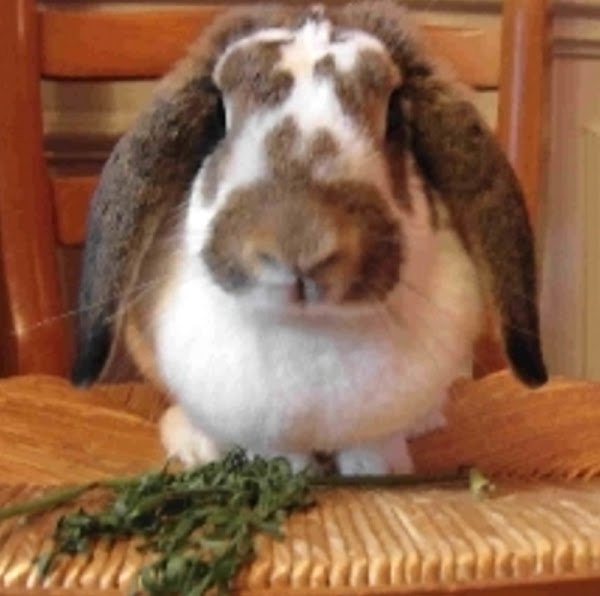
Temperament And Personality
The French Lop Rabbit is well known for it’s gentle and affectionate temperament. One of the most endearing specialties of this breed is it’s personality and temperament. They are excellent companions for families and individuals alike, mainly because of their friendly and easygoing nature.
They are social animals that enjoy human interaction. They and are known to form strong bonds with their owners. They thrive on attention and will often seek out cuddles and affection. They are less prone to stress due to their calm demeanor and are generally easy to handle. You can easily raise them without any problem.
Housing
Providing your rabbits with a good housing system is very important. Because, a good and secure housing system not only helps the animals to stay healthy and comfortable but also helps them to stay free from diseases and other health issues.
Due to the large size the French Lops more housing space. Generally, a clean and well-ventilated house is good for them. Ensure that the house is spacious enough. Doing this will allow them to move comfortably, stand on their hind legs, and stretch out fully.
Also ensure good protection of the animals from harmful predators. Keep bedding materials inside their house so that they can stay warm during the cold months. And install cooling system for keeping them cool during excessive hot days. Always try to clean their house on a regular basis.
Feeding
Feeding the rabbits with very good quality and nutritious food is the most important part of caring these beautiful creatures. Like many other breeds, the French Lop rabbits also require a nutritious and well-balanced diet to ensure good health and vitality.
These rabbits generally thrive well on a diet primarily consisting of fresh hay. Fresh hay provides essential fiber for their digestive system. You can also offer a variety of leafy greens and high-quality rabbit pellets to provide necessary nutrients. Don’t overfeed your rabbits, as French Lops have a tendency to gain weight.
Along with providing them with enough nutritious food, always try to provide them adequate fresh and clean water as per their demand to keep them hydrated.
Breeding
Successful breeding is very important for increasing the number of rabbits in your farm. Fortunately, these rabbits are excellent breeders and they will breed easily.
It’s essential to select healthy, pedigreed rabbits with good genetic backgrounds to ensure successful breeding, and also for the offspring’s health and adherence to breed standards.
Caring
Taking good care of the animals is very important for raising French Lop rabbits. Good care helps to keep the animals happy and healthy. Common caring tasks of these animals involves providing your animals with a very good and secure housing system, providing them nutritious food, giving them adequate clean and fresh drinking water, regular grooming, regular exercise, and monitoring their health on a regular basis.
Uses
The French Lop rabbit was mainly developed as a meat rabbit breed. And was a very popular meat rabbit breed in the mid 19th century. The breed is very suitable for commercial rabbit farming business for meat production. The breed is also good as pets and show animal.
Special Notes
The French Lop rabbits are of good nature, social and have a calm, good temperament. As it is a large breed in comparison to other breeds, it may require large run/hutch to move around freely. They do well in both indoor cages and outdoor. The breed is also known to be of placid and relaxed temperament. They can tolerate other species.
If properly cared and socialized well at a young age, these rabbits can be a wonderful family pet. They are very gentle with children. As a good natured and social animal, the breed will thrive on interaction with people as well as with other rabbits. They can be quite playful and will enjoy some simple toys to keep them occupied.
The does tends to have large litters, sometimes with as many as twelve offspring. The average lifespan of this rabbit breed is about 5 to 7 years. However, review full breed profile of these rabbits in the chart below.
| Breed Name | French Lop |
| Other Name | None |
| Breed Purpose | Raised as a meat breed. But also suitable for raising as pets and as show animal. |
| Breed Size | Large |
| Weight | Average body weight is between 4 and 5.5 kg |
| Suitable for Commercial Production | Yes |
| Good as Pets | Yes |
| Climate Tolerance | All Climates |
| Color Varieties | Many color varieties available which include Black, White, Brown, Blue, Agouti, Chinchilla, Opal. Sooty Fawn, Siamese Sable, Orange, Fawn, Steel and Butterfly. |
| Rarity | Common |
| Country of Origin | France |

